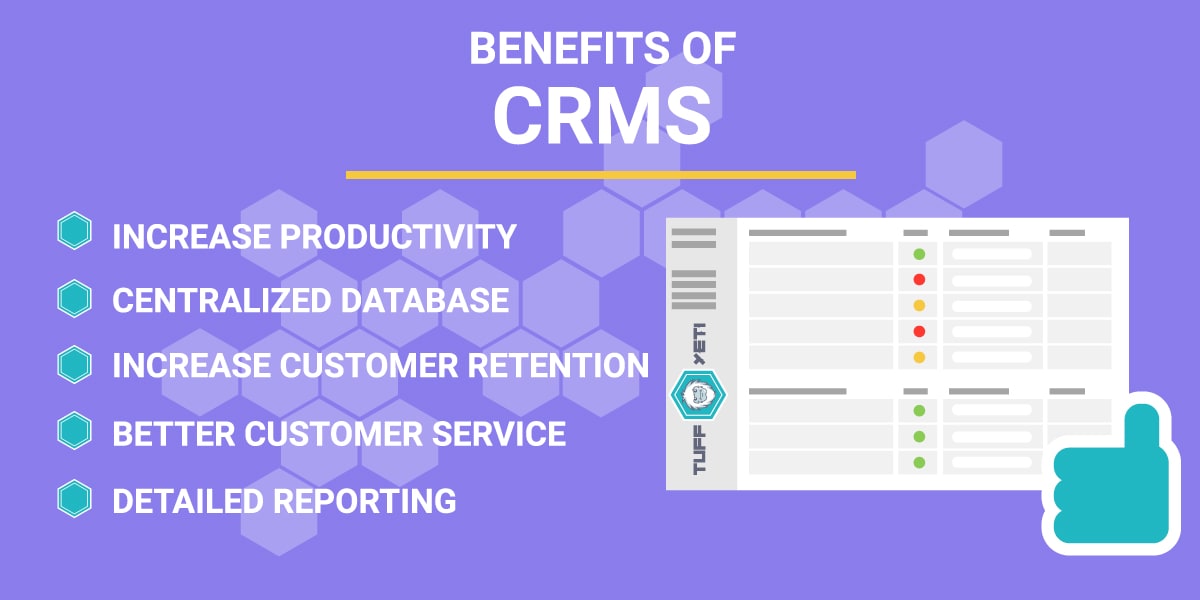How to Start Blogging for Business Success (10 Key Steps)
If you’re looking for information on how to start a blog to make money and turn it into a business, you’ll want to start on the right foot. There are many ways to succeed, along with many ways to fail.
Starting a blog on WordPress or another of the best blogging platforms is one of the easiest ways to get started.
However, before you dive head first into building your blog website and writing content, you’ll need to pick a niche, define your main content categories and do your keyword research. Doing this will help you find the best opportunities to drive traffic to your blog through SEO and other means.

Throughout this article, I’ll guide you through the key steps it takes to create a blog the right way.
- Pick a niche for your blog
- Define your main categories
- Create your blog website
- Do your keyword research
- Create quality content
- Optimize your content for SEO
- Add additional media – Start a YouTube channel
- Start to monetize your blog
- Market your blog
- Update your content – keep it fresh
1. Pick a niche for your blog
The first step in starting your business is finding an area or choosing a niche that you feel comfortable writing about. Usually, it’s best to have some knowledge in the area you want to start a blog in, as this gives you a good starting point to learn more about the subject.
Do your market research, find out how competitive the niche is and what others in the chosen subject area are doing. Find out a few key areas that could be a good place to start writing content. Don’t worry about how you’re going to monetize your website at this point, as this can drive you in the wrong direction.
This stage is about finding the right subject with lots to write about, so you don’t pigeonhole yourself into a corner.
Picking a niche can take time, but don’t let it overwhelm you. It’s good to write down a few options, then choose one that stands out and go with it. Procrastinating is a great way to fail at the first step in setting up a blog.
2. Define your main blog categories
Once you’ve found a niche that you’re happy with, it’s time to define a few key topics or categories that you can drill down on and focus your content creation efforts on.
As a new blog site, you’ll want to quickly try and gain as much authority as possible in the niche. Focusing on a small number of topics, typically 2 or 3, will help Google and other search engines recognize that you know what you’re talking about and are a go-to resource for searchers.
Going too broad on your categories can confuse search engines, and it’ll take longer for them to figure out what your website is about. Once you’ve written about 10 – 15 posts around each topic, you can move on to expanding to other topics within your niche.
After a few months redefine your categories
Give it a few months and what you’ll find is that some topics might start ranking well and others not so much. This data can help you drill down further and write more content about the topics you’ve started to see success in.
Doing this can quickly bring more traffic to your blog, but if you’re not paying for advertising or don’t have good exposure, blogging can take a good six months to a year to see any decent traffic and growth.
Not seeing this instant growth or getting instant feedback for all the work and time you’ve put in is where many first-time bloggers give up. It might feel like a waste of time, but stick at it, and you might be pleasantly surprised.
3. Create a blog
You’ve found your niche and figured out the main topics to write about. It’s now time to start thinking about creating a blog.
You can use website builders software like Wix or Squarespace; however, they often come with limitations if you’re looking to grow your site.
WordPress is one of the best blogging platforms with the most significant market share in the industry, for good reasons.
Blogging with WordPress
WordPress CMS has a huge community of people, developers, and plugins for you to add to your new blog, making it one of the easiest to use for non-tech-savvy bloggers.
With the drag-and-drop Gutenberg editor, you can quickly design how your website looks, add pages and special block areas and expand on its technical abilities with hundreds of plugins.
Plugins like ShortPixel to optimize your images, Wordfence to secure your blog, and Rankmath to help optimize it for search engines.
If you do choose WordPress it’s best to go the self-hosted WordPress route. This means you’ll have to:
- Find a domain name – the name people enter into your search bar
- Compare web hosting – the place where your websites files are stored
It’s easy enough to do, and I recommend Namecheap for finding cheap domain names and WPEngine for WordPress hosting that optimizes its servers specifically for the WordPress content management system.
- WP Hosting is optimized for performance, load speed and SEO
- Save yourself time with automatic updates for WordPress & PHP
- Threat blocking and security built-in to help makes sure your WordPress website is safe
- Unmetered hosting with Free SSL & Weekly Backups
- 24/7/365 tech support available
- Plans include Cloudflare CDN & DDoS protection
- Choose from top level domains at affordable prices
- Free Whois privacy protection and private domain registration
- Sell and buy domains via the online domain marketplace
Related: Here’s a quick guide on ‘how to create a website‘ covering from picking a domain to getting your website set up.
4. Do your Keyword Research & Competitor Analysis
Once you’ve set up your blog, it’s time to start figuring out what content you will write.
By now, you should know the main categories or topics. The next step is to drill down into those topics to find low competition opportunities but lots of searches per month.
Here are a few tools for keyword research that you can use:
- Use the Google Autocomplete feature: do your keyword research on Google by typing a query into the Google search box, and it will come back with suggestions based on what people are searching for. A good way to find some topics which you can then throw into a keyword tool to figure out some rough search volume stats.
- Use Google Trends: a good way to get some traffic is to write about what’s currently popular, head over to the Google Trends website, enter a term and see how popular it is. It can give you some good ideas for popular content to write about.
- Use AnswerThePublic: a website that will return a range of questions and topics for you to write about, given a specific term. These questions are being searched, so you know they are worth writing about. AnswerThePublic a great way to find an overall topic by combining many of the results into a single post rather than producing content about each one.
- Use Keyword Research Tools: Keyword tools like Ahrefs, Semrush, and Spyfu can help you find keyword opportunities. These tools have billions of keywords in their database and often bring back data based on search volume and how hard it can be to rank. They’ll even show you what pages and websites are currently ranking in the top ten results on Google to see how competitive it is. If a few domains are ranking on the lower end of the Domain Rankings (i.e., closer to 0 than 100), you know you have a good opportunity to compete.
While doing your keyword research, you’ll often find that short tail terms (also called head terms) like ‘ecommerce platforms’ have decent search volume but are also hard to compete for. When starting, it’s best to focus your search for keywords on long-tail keywords like ‘what are the best ecommerce platforms‘.
They might not have as much search volume, but your blog post covering the subject in depth could rank for hundreds of terms around the subject and number 1 for that specific long-tail term.
If you do your SEO research right, you’ll be able to find opportunities that your competitors aren’t ranking for or areas in which you can create better quality content to surpass them in the search engine page results (SERPs).
5. Create quality content
You might think that the more blog posts you have, the higher your chance of ranking on search engines is. This thinking is where many new bloggers fail.
Pumping out short-form content that’s the same as everyone else is not a good way to stand out and especially not a great way to appear on the first page of Google.
I’m not saying that every post needs to be over 2000 – 3000 words long, but having original researched content with data to back up your findings means that your 1,000-word piece has a great chance of ranking well over a 3000-word article that’s spun from elsewhere.
Research & structure your blog content
What’s good about research is that people are willing to link to it from their blogs and websites, which means you stand a chance of getting backlinks without the need for any backlink outreach.
To start writing content right, you’ll need to structure your content well. Ensure you have a good title with your keyword, an introduction, or an area where you answer the problem or question straight off the bat to help with featured snippets, subheadings, and images.
Structuring your content right and adding all of the main factors that help with on-page SEO is a good way to get your content to rank higher quicker.
Many new bloggers often overlook spell checking and grammar checking their content before it’s published. This mistake can make your blog lose trust in the eye of the reader and is easily avoidable.
A tool like Grammarly lets you quickly check your article for spelling and grammar mistakes with helpful suggestions. You can even use their plagiarism tool to ensure your piece is unique enough against your competitors on the internet.
Related: Tips for Writing Content for SEO.
6. Optimize your content with SEO tools
This step you can do either while you’re writing your content or after you’ve published it. It can help give your content a slight boost by conforming to search engines’ many different ranking factors.
Using SEO writing tools like Surfer, you can check your content for missing keywords around the main topic, which could help it rank higher.
You’ll also get access to checking many of the on-page SEO factors that might be missing, like Meta Titles, Meta Descriptions, Headings, Images, Image Alt text, and those kinds of things.
Make sure that you add external and internal links where appropriate to support your content further. Internal links can help pass link juice between pages and help crawlers identify similar topics or content, just be sure to do your internal linking right. Read this article on Semrush on how to create an internal linking strategy for your blog.
Tools like LinkWhisper for WordPress can help identify missed internal linking opportunities and prevent any orphans from occurring.
Compare SEO software like Ahrefs and Semrush to find the right ones that provide you with the tools to understand how to use and offer the right features at the right price.
7. Add additional media to your blog posts
If you’re setting your blog apart from the other blogs in your niche, adding other media to your content lineup is a great way to stand out.
Infographics are still a popular way of adding value to your content, complimenting your existing content or a new piece. These visualize data and your content in a way that is more shareable across social media and other outlets and provides good resources for people to link back to in their own website content.
Create a YouTube channel
If you really want to go the extra mile, you’ll want to start investing some time in creating YouTube videos. YouTube is a huge search engine on its own, and it ranks your video quicker than regular search engines. It can reach a broad audience that likes to consume videos rather than read long-written articles.
Setting up a YouTube channel is free and pretty painless, plus you don’t even need any expensive equipment to get started. You can use your mobile phone to record yourself, and when you have the money, you can upgrade your video-making equipment and video editing software to create better quality ones.
Videos often show up at the top of some searches on Google too. Showing up in search and YouTube gives you a double boost, especially as you can always embed the videos into appropriate content on your website, increasing your time on page stats and giving your blog a rankings boost.
Even if you’re shy about putting your face out there for everyone to see, there are ways you can create videos for your blog. You can always use static images with voiceovers or whiteboard animation software like Doodly to create engaging whiteboard-style videos quickly.
8. How to monetize your blog
When you start getting some decent traffic to your website, that’s when you should be looking to monetize a blog so you can make money from blogging.
One of the easiest ways to make money blogging is to add some sort of banner advertising to your posts. Google Ads and Ezoic are popular advertising platforms that show other people’s ads on your site while you get paid for the number of clicks you pass through.
You’ll need a high-traffic website to make decent money from having adverts on your site. This high-traffic demand is why you’ve spent time creating quality content and growing your website to this position before monetizing it.
Other ways to start making money with a blog include:
- Affiliate Marketing: sign up to affiliate programs, place special affiliate links within your content and get paid a commission when someone purchases the product your promoting.
- Sponsored Content: a company sponsors a post or video for a fixed sum of money, helping them get their brand in front of your high traffic audience.
- Paid Membership: setup a paid subscription that gives your readers access to exclusive content, an advert free experience or discount offers.
- Sell Merchandise: sell merchandise based on your brand, use print-on-demand services to create clothing, mugs, laptop covers, and more.
- Create Digital Products: sell your own digital products like ebooks, or create online courses that people can sign up for to learn from, extending your revenue stream.
9. Start marketing a blog
Creating quality content focused on easy to rank for keywords and search terms is one of the best ways to market your blog in the first place.
Search engines, on average, drive over 50% of the traffic to a website so focusing on your search engine optimization techniques and making sure your content conforms to popular SEO standards is a great way to get ahead of the competition.
SEO also has one of the best returns on investment than other marketing channels, with visitors from search engines more likely to purchase than those from traditional marketing efforts.
Performing SEO, though, isn’t a do it and forget about it scenario. You’ll need to keep adding SEO-rich content to your website that targets more keywords in your niche, which will result in an exponential growth of your traffic over time.
It’s also best to use SEO website audit tools every other week or monthly to make sure you catch any issues like missing title tags, broken links, and 404 errors that could have a performance issue for your blog.
Of course, if you’re looking to grow your brand beyond SEO, then there are a few other ways to market a blog:
- Paid advertising: sign up for an ad network to display your adverts on other people’s websites or at the top of search engine results pages.
- Social Media: set up social media accounts across popular networks where your audience is likely to be hanging out. Social media can help with brand awareness as well as drive some traffic to your site
- Email Marketing: Start gathering emails as soon as you can. People interested in what you do are more likely to purchase or come back and read your content than those who aren’t. There’s plenty of email software for marketing out there that let you create sign up forms, landing pages and good-looking emails to send to your readers.
- Affiliate Marketing: If you get big enough and perhaps sell your own online course, then there’s always the possibility to set up your own affiliate platform that reimburses people for sending people your way.
Marketing a blog takes time and effort. To help your blog continue to grow, start to invest some of the money you’ve made from monetizing your site to hire freelancers or services. Doing this can help you focus on the other areas of the blog, turning your blog from a job into an actual business.
10. Update your blog content
Last in my top ten steps to starting a blog is remembering to update your content. Most of the niche content you’ll be writing will be evergreen posts.
Evergreen posts are where the content doesn’t go out of date. For example: in ‘7 Best SEO Tools‘, the overall topic will be around for as long as search engines are, but the software listed in the post might change over time.
To keep your blog posts fresh, put your posts on a 3 to 6-month rotation of updating. To get the most out of your existing content, you can check out your analytics data to see which posts are getting traffic, where they rank and update the ones that have the potential to rank higher quicker.
Of course, it’s always best to update outdated content with fresher content, as this shows Google that your content is the most relevant for people searching. This freshness factor can help boost an old article and any content it links to on your website.
Keeping your content up to date is an essential factor from now on. Analyze your site, and make sure you focus on the right areas that are performing for you.
Should you start a blog?
Starting a blog is easy. Getting through the ups and downs that follow after setting up your website and posting your initial post is the hard part.
Driving traffic isn’t as easy as it once was. However, if you follow the key steps above, do your research continually for new posts, and when updating your old content, you’ll be well on your way to succeeding. By focusing on the low-hanging fruit (decent search volume with low competition), you’ll have greater success over time.
If you’re on a budget, you can start a WordPress blog with a few bucks investment per month, the major investments being the domain name and web hosting platform.
Other business tools like Grammarly and SEO tools can be added later but are well worth the initial outlay if you can afford it.
Remember that a new blog can take a long time to gain the authority it needs for its content to start outranking the competition. A 30-post website isn’t going to cut it against some hefty competition with hundreds or thousands of posts and backlinks.
You’ll need to knuckle down and get through the times when you don’t see any growth for the first 6 – 8 months. It’s disheartening, I know. I’ve been there many times, but many bloggers fail because they don’t stick at it giving up after a few weeks or months.
Stick it out for a year, and if you’ve created quality content, you’re bound to see that exponential growth on your analytics software we all go crazy about when it happens. It is exciting to see but will take continued work to keep it growing.
Top Tip: Invest in your blog once you start making money, and you’ll be able to create quality content quicker and find new opportunities and ways to create content.
Related Resources
- Tools to Build a Business
- Tools to Manage a Business
- Tools to Grow a Business










